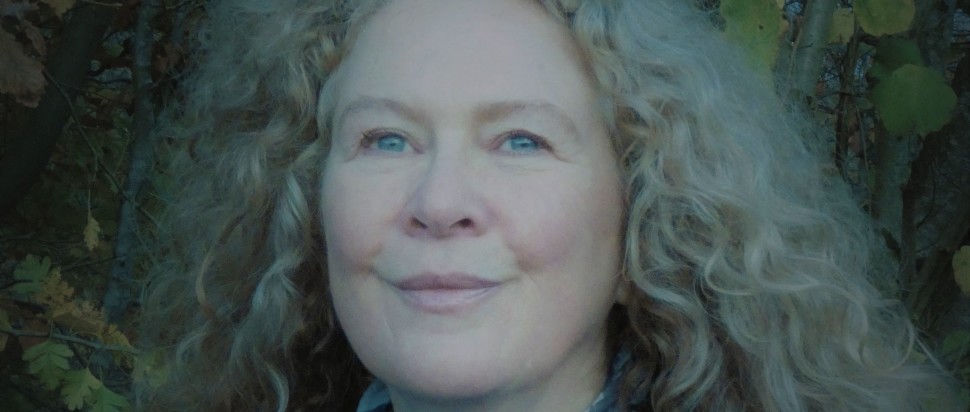Stories of Salvation: Allison Galbraith interview
We meet Allison Galbraith, one of the storytellers engaging communities in the Green Futures strand of Glasgow Science Centre’s Our World, Our Impact programme
From Samhain to Beltane, Beira rules the winter months. Sometimes known as the Cailleach ('old woman' or 'divine hag'), this icy goddess freezes the land before squaring off against Brìghde (or St. Brigid), the goddess of spring, to herald the passage into warmer days. They both appear in various Celtic myths and folktales throughout the ages, sometimes as two sides of the same deity, but always in opposition. In one tale, Beira grows frustrated with Brìghde’s greater popularity (who doesn’t prefer the summer?), and decides to burn down the Caledonian Forest.
This tale of the Cailleach and her fit of jealous arson might not seem immediately relevant to the ongoing climate crisis. Indeed, myths and legends are not typically the first port of call when the language of the crisis is one of sobering statistics, slow-moving governments and increasingly urgent calls for action. But for Allison Galbraith, whose work frequently uses folklore as a means to inspire environmental action, this story is more than mere fable.
“People have been storytelling since there have been people,” says Galbraith, a prolific storyteller with a masters in Scottish Folklore from the University of Glasgow. “It's the oldest art form in the world.”
This story, as she tells it, is called Saving the Forest, taken from a 2017 collection (Dancing with Trees: Eco-Tales from the British Isles) written with Dr. Alette J. Willis. Without spoiling too much, the forest’s salvation comes in a plan from a bright young girl – a sort of Greta Thunberg-esque character representing the hope and ingenuity of youth.
Under the Green Futures strand of the Glasgow Science Centre’s Our World, Our Impact programme, Galbraith is one of a handful of storytellers recruited to engage communities via this age-old medium. But how does an eco-raconteur avoid the sometimes overwhelming doom and gloom conjured by the mounting crisis?
“Alette and I, when we made [Dancing with Trees], were really aware of this, that it can become a hysteria of ‘we've gone too far, it's too late, too many species have died’,” she says. “So we very consciously stayed totally away from that narrative, and used the stories as not just a way to understand nature, or to look at the mistakes our ancestors had made, but to find really positive pearls of wisdom about good stewardship of our environment. And then we would put a footnote in about how it links with current environmental practice and things you can do to help.”
Far from being frivolous entertainment, “there's wisdom out there. And if we listen to those narratives, it will help us change our narratives and the legacy that we're leaving for the future generations. We really hit it home in this story that it's a child that can help.”
She is therefore especially keen to connect with younger audiences, and has swotted up on the science behind her work. “Children learn better through stories. We relate to metaphors for learning extremely well, because that's what the brain is wired to do. That’s how we communicate. 65% of the day is spent telling stories to each other – or to ourselves.”
Crucially, storytelling evokes empathy. “Everybody hears a story differently,” she elaborates. “When I tell the story to a group of 30 children, people take away different personal experiences. How does that group of children and all those little individuals then impact the world and make a difference? Because they're going home and they say, ‘no, mummy, I don't want anything with palm oil in it. The gorilla in that story's forest was gone!’ and they start to connect that way on a small level.”
Of course, in these isolated times, Galbraith’s typically in-person discipline must be rehomed in the digital sphere. Reciting to camera, instead of a live audience, brings its own challenges (particularly around calibrating her language: “you can't laugh and say it a different way, the way you would when a child looks at you in a confused manner”), but ones made more manageable thanks to resources and support from institutions like the Scottish Storytelling Centre. As we’ve seen elsewhere in this pandemic, communities are rallying and working together.
“Somebody told me they get their friend to come and sit behind the camera,” she says. “I don't have that luxury. My other half, he won't listen to another story I tell, he's had 14-plus years of it!” We suggest talking to a stuffed animal, but she’d tried that with a Christmas elf. “That didn't help. It grinned at me the whole way through!”
Virtual or otherwise, stories do carry the power to change hearts. “A good story is one that connects you to your courage. It's personal,” says Galbraith.
She concludes our chat by recalling a quote, attributed to Albert Einstein, that goes some way in defending folklore’s place in discussions of science: “If you want your children to be intelligent, read them fairytales. If you want them to be more intelligent, read them more fairytales.”
Our Green Futures launches on 22 Mar, part of Glasgow Science Centre's Our World, Our Impact programme www.glasgowsciencecentre.org/discover/our-world-our-impact
